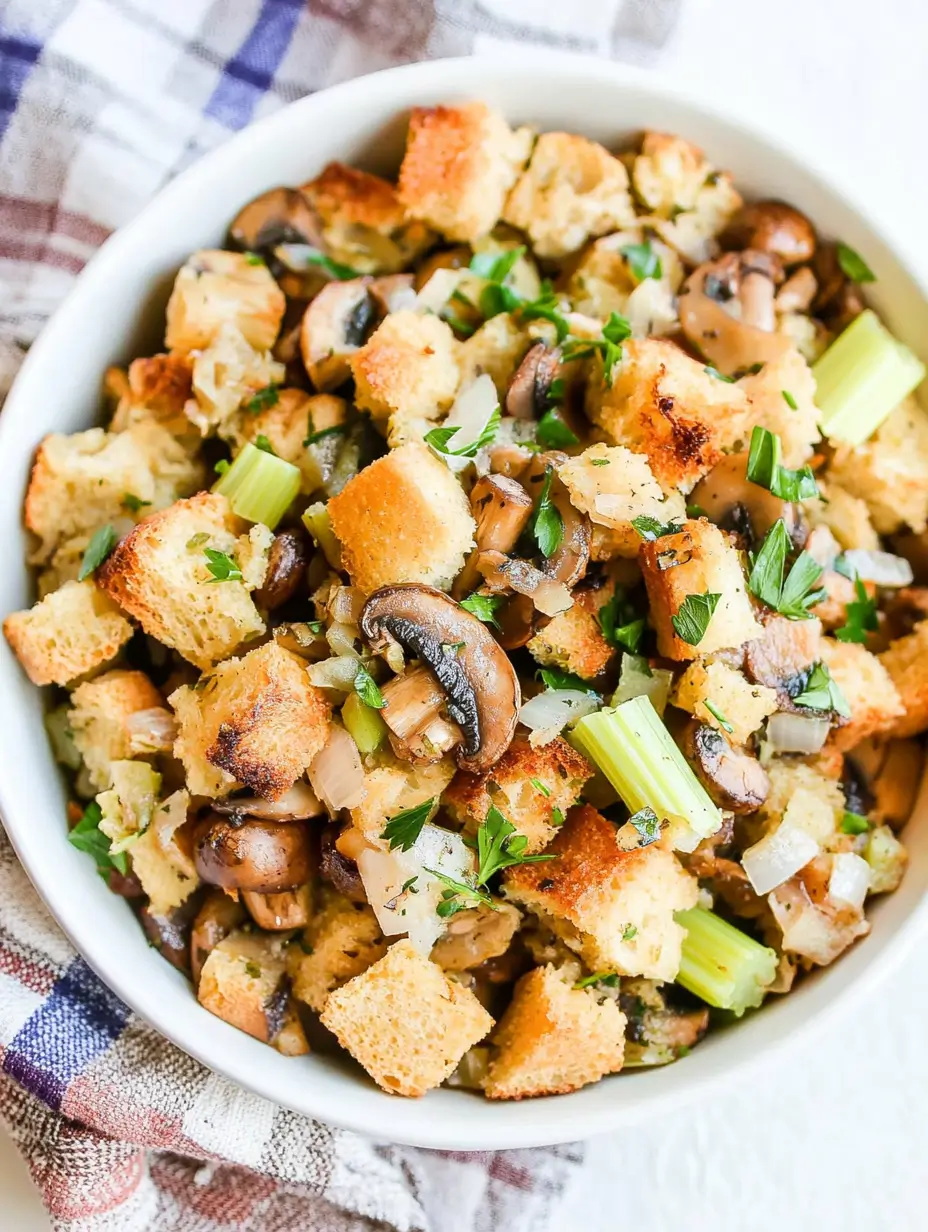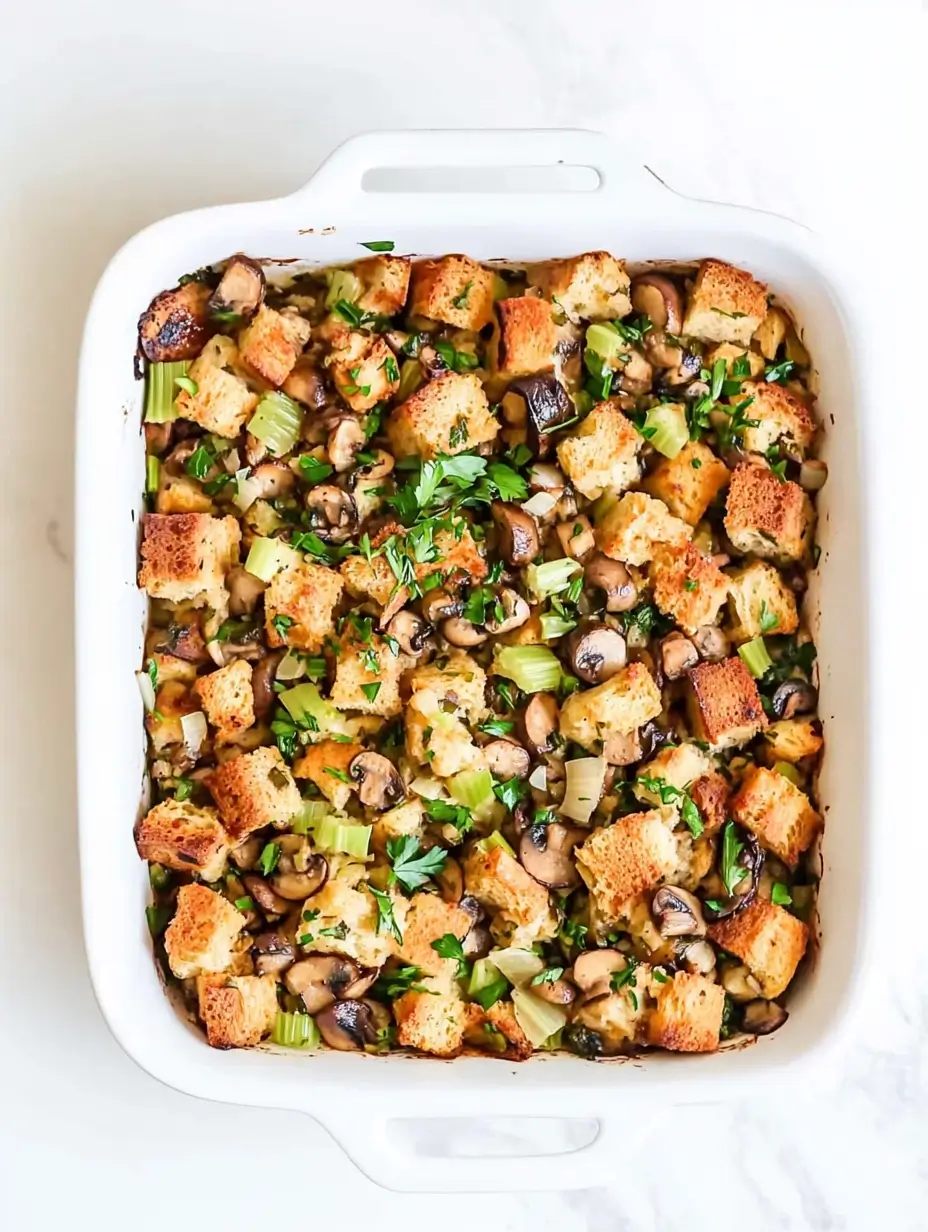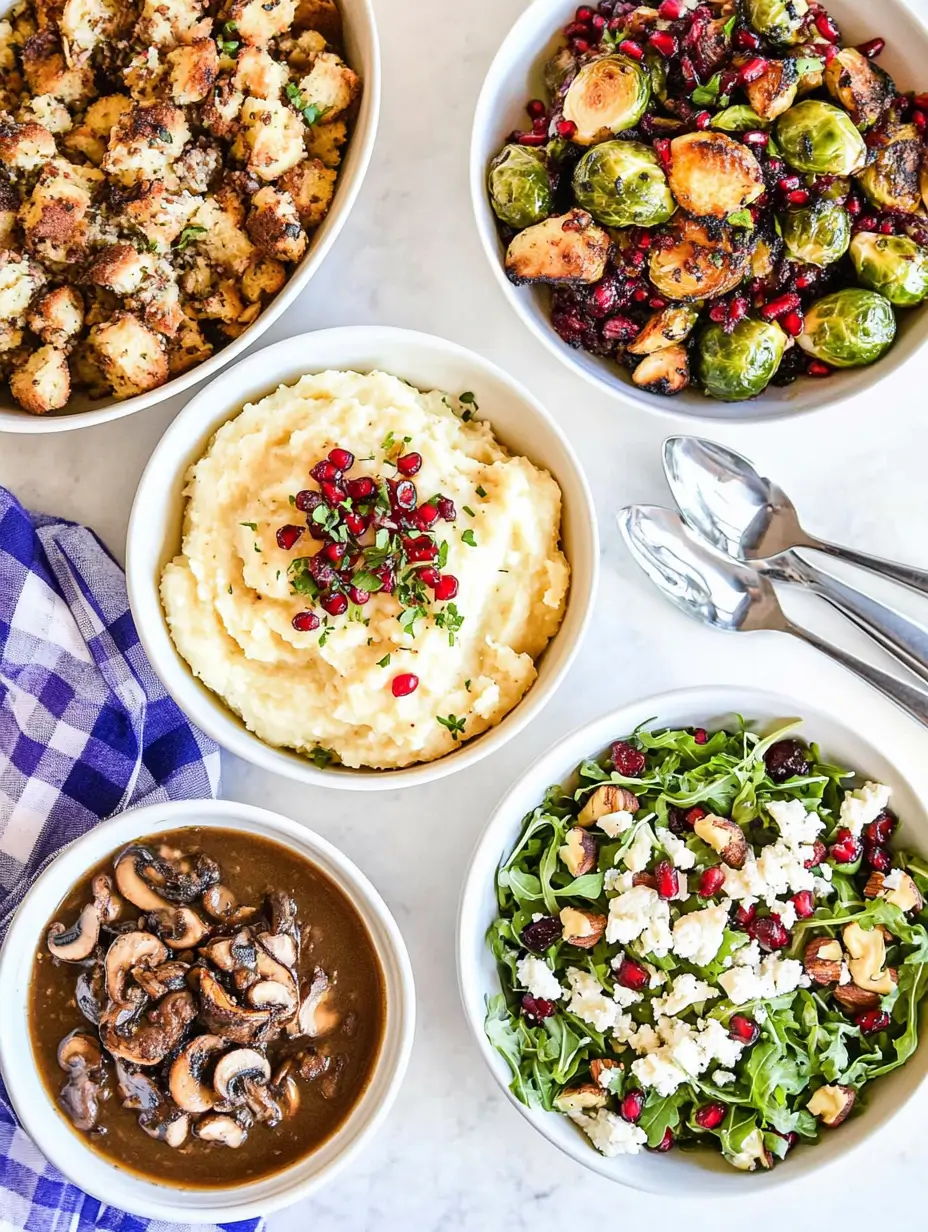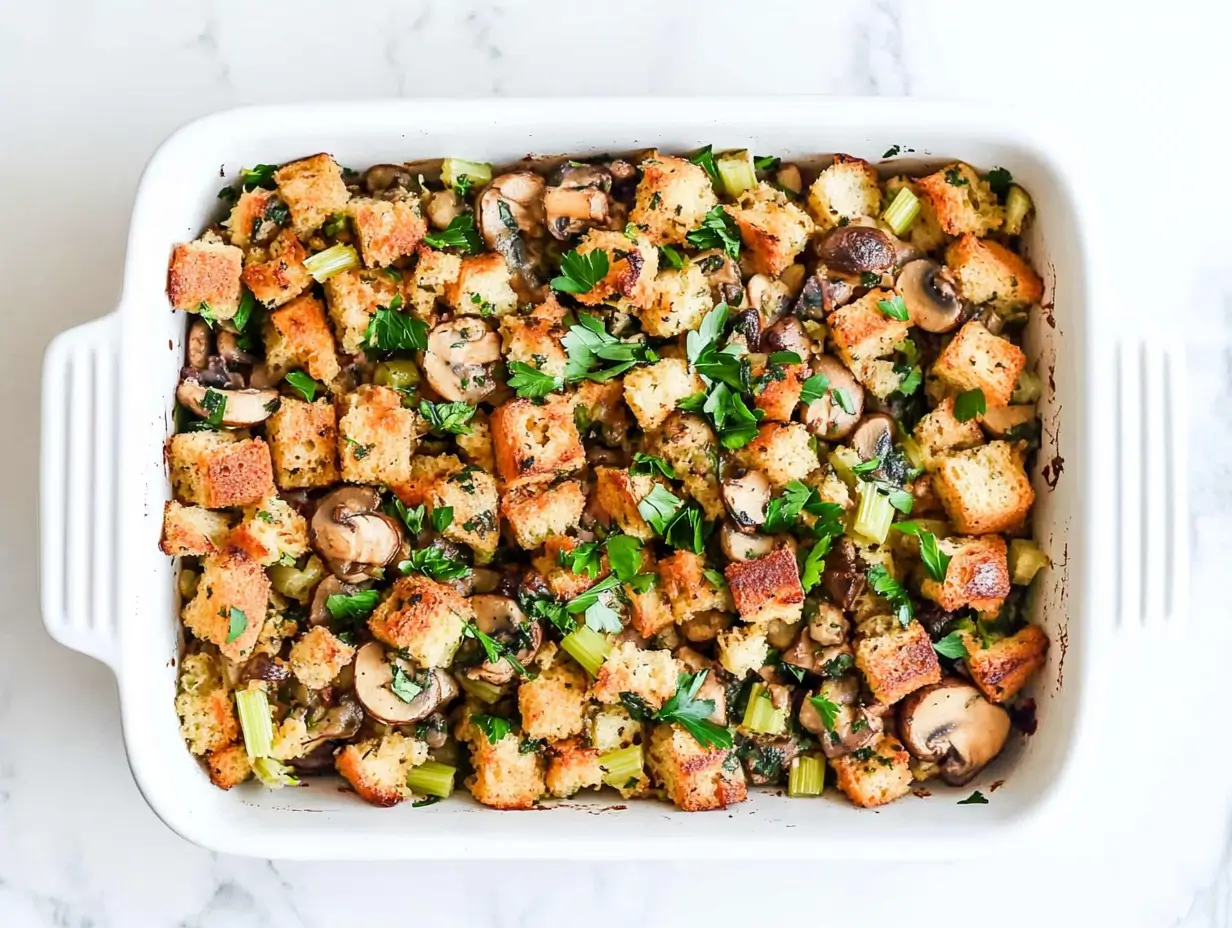When it comes to holiday meals or hearty family dinners, sourdough bread stuffing is a timeless favorite. Known for its unique flavor and versatility, this dish adds a rustic charm to any table. Whether you’re hosting Thanksgiving or looking for a comforting side dish, this guide will help you master sourdough bread stuffing. With the right ingredients, techniques, and creativity, you can elevate this classic recipe to a whole new level.
Why Choose Sourdough for Stuffing?
Sourdough bread is an ideal choice for stuffing because:
- Flavor: Its tangy, fermented taste complements savory ingredients.
- Texture: The sturdy crust and chewy interior hold up well during baking.
- Versatility: Sourdough pairs beautifully with herbs, spices, and vegetables.
Additionally, sourdough is often considered easier to digest due to its natural fermentation process, making it a healthier option for some people. These qualities set sourdough bread stuffing apart from versions made with plain white bread.
Additionally, sourdough is often considered easier to digest due to its natural fermentation process, making it a healthier option for some people. If you’re curious about the science behind sourdough’s benefits, check out this article on the health advantages of sourdough

Essential Ingredients for Sourdough Bread Stuffing
To create delicious sourdough bread stuffing, you’ll need the following:
- Sourdough bread: To start, choose a loaf with a thick crust and chewy texture. This is especially important because the crust adds structure, while the chewy interior absorbs flavors beautifully. Additionally, sourdough’s tangy flavor enhances the overall taste of the stuffing.
- Vegetables: Next, include vegetables such as onions, celery, and garlic. These are classic choices that form the aromatic base of the dish. Moreover, they provide a balance of sweetness and savoriness that complements the sourdough bread.
- Broth: For moisture and depth, select chicken, turkey, or vegetable broth. Not only does this keep the stuffing moist, but it also infuses rich flavors into the bread. Furthermore, the type of broth you use can enhance specific flavor profiles, depending on your recipe.
- Herbs and spices: Popular options include sage, thyme, parsley, and rosemary. These herbs are essential for adding an earthy, fragrant dimension to the stuffing. In addition, their fresh or dried forms can be adjusted based on availability and taste preferences.
- Fat: Butter or olive oil is next on the list. These fats play a dual role by enhancing flavor and aiding in browning the stuffing. Plus, they create a luxurious texture that ties all the ingredients together.
- Add-ins: Finally, consider optional ingredients like sausage, mushrooms, nuts, or dried fruits. These extras can add texture, complexity, and a layer of interest to your stuffing. For example, dried cranberries bring sweetness, while sausage provides richness and a savory boost. As a result, the stuffing becomes a truly personalized side dish.
Preparing Sourdough Bread for Stuffing
Properly preparing sourdough bread is key to a great stuffing:
- Cut into cubes: Slice the bread into evenly sized cubes, about 1 inch each.
- Dry out the bread: Allow the cubes to sit out overnight to become stale, or bake them at a low temperature (around 250°F) for 20–30 minutes. Dry bread absorbs broth more effectively.
- Season lightly: Toss the cubes with a bit of olive oil and salt for a touch of flavor before combining them with other ingredients.
How to Make Sourdough Bread Stuffing: Step-by-Step Recipe
Follow this easy recipe for perfect sourdough bread stuffing:
Ingredients:
- 1 loaf sourdough bread, cubed and dried
- 1 cup diced celery
- 1 cup diced onion
- 3 cloves garlic, minced
- 2 cups chicken or vegetable broth
- 1/2 cup butter (or olive oil)
- 2 tsp dried sage
- 1 tsp thyme
- 1/4 cup chopped parsley
Instructions:
- Preheat oven: Set your oven to 350°F.
- Saute vegetables: In a large skillet, melt butter and saute onions, celery, and garlic until softened.
- Combine ingredients: In a large bowl, mix the bread cubes, sauteed vegetables, and herbs. Gradually add broth until the mixture is moist but not soggy.
- Transfer to a baking dish: Spread the mixture evenly in a greased baking dish.
- Bake: Cover with foil and bake for 30 minutes. Remove foil and bake for an additional 15 minutes for a crispy top.

Variations of Sourdough Bread Stuffing
Sourdough bread stuffing is incredibly versatile. Try these variations to suit different tastes:
- Meaty stuffing: Add cooked sausage, bacon, or diced ham.
- Vegetarian stuffing: Use mushrooms, leeks, or roasted vegetables for a plant-based option.
- Sweet and savory: Include dried cranberries, raisins, or chopped apples for a hint of sweetness.
- Nutty twist: Sprinkle in toasted pecans, walnuts, or almonds for added crunch.
Popular Herbs and Spices for Sourdough Stuffing
The right combination of herbs and spices makes sourdough bread stuffing shine. Popular choices include:
- Sage: A classic herb for stuffing, offering an earthy, warm flavor.
- Thyme: Adds a subtle, woody aroma.
- Rosemary: A bold, pine-like flavor perfect for festive meals.
- Parsley: Brings freshness and vibrancy to the dish.
- Paprika or cayenne: For those who prefer a little heat.
Experimenting with these flavors allows you to customize your stuffing to your liking.
Perfect Pairings: Dishes to Serve with Sourdough Bread Stuffing
Sourdough bread stuffing pairs wonderfully with a variety of dishes:
- Roasted turkey or chicken: A holiday favorite, complemented by the rich flavors of stuffing.
- Grilled vegetables: Serve with asparagus, Brussels sprouts, or carrots for a balanced meal.
- Mashed potatoes: The creamy texture contrasts beautifully with the stuffing’s crisp edges.
- Cranberry sauce: Adds a tangy, sweet note to the savory stuffing.
- Soup, noodles, or salad: Pair with a light starter, such as butternut squash soup, a bowl of noodles, or a green salad.

Common Mistakes When Preparing This Popular Stuffing
When preparing sourdough bread stuffing, it’s easy to fall into common pitfalls that can impact its flavor and texture. Here’s what to watch out for:
- Using stale bread instead of day-old bread: While sourdough works best when slightly dry, overly stale bread becomes too hard and doesn’t absorb liquids well, ruining the texture of your dish.
- Skipping the seasoning process: Sourdough has a unique tangy flavor, but it still needs a balanced combination of herbs and spices to complement the dish. Without seasoning, it may taste bland.
- Over-soaking the bread cubes: Using too much liquid can turn stuffing into a soggy mess. Always aim for a moist but firm texture.
Avoiding these mistakes ensures your stuffing comes out perfectly every time.
Tips to Prepare Stuffing Ahead Without Stress
Planning ahead can make preparing stuffing stress-free. Follow these tips for the best results:
- Prepare the bread cubes in advance: Cut and lightly toast sourdough bread cubes a day or two before making the stuffing.
- Mix ingredients separately: To save time, chop vegetables and measure spices ahead of time. This keeps the process quick and organized.
- Assemble before baking: Combine all the ingredients, including the broth, shortly before baking to retain the ideal texture of your stuffing.
By preparing ahead, you can save time and still serve delicious sourdough bread stuffing.
Regional Flavors to Inspire Your Holiday Side Dish
Sourdough bread stuffing is versatile and adapts beautifully to regional flavors. Here are some popular variations:
- New England Style: Cranberries and walnuts not only add sweetness but also provide a delightful crunch, which together create a unique and memorable flavor profile. Moreover, this variation pairs wonderfully with roasted turkey or chicken.
- Southern Style: Featuring cornbread, sausage, and bold spices, this variation seamlessly blends with the tangy notes of sourdough bread. Additionally, the robust flavors make it an excellent choice for hearty, comforting meals.
- Southwestern Influence: Roasted chilies and cumin introduce a bold, spicy twist to traditional stuffing. As a result, this variation offers a vibrant, flavorful option for those who enjoy dishes with a bit of heat. Furthermore, it’s perfect for pairing with grilled or smoked meats.
Each variation enhances the distinct flavor of sourdough while embracing local ingredients.
Health Benefits of Sourdough Bread Stuffing
Sourdough bread stuffing isn’t just flavorful; it also offers several health benefits, thanks to the sourdough itself:
- Rich in probiotics: The fermentation process in sourdough promotes gut health by fostering beneficial bacteria.
- Lower glycemic index: Compared to other breads, sourdough causes a slower rise in blood sugar levels.
- Easier to digest: The fermentation process breaks down gluten and phytic acid, making sourdough more tolerable for those with sensitivities.
- Nutrient-dense: Sourdough contains higher levels of vitamins like B1, B6, and folate, as well as minerals such as iron and magnesium.
- Great source of fiber: Using whole-grain sourdough boosts the fiber content of your stuffing.
By incorporating sourdough bread stuffing into your meals, you’re enjoying a healthier alternative to traditional stuffing recipes.
How to Store and Reuse Leftover Sourdough Stuffing
Leftover sourdough bread stuffing doesn’t have to go to waste. Follow these tips for storing and repurposing it:
- Refrigerate properly: Store leftover stuffing in an airtight container and place it in the fridge within two hours of cooking. Consume within 3–4 days.
- Freeze for later: Portion the stuffing into freezer-safe bags or containers. It can last up to 3 months in the freezer.
- Reheat carefully: Warm leftovers in the oven at 350°F (175°C) to restore the crispiness. Add a splash of broth if it seems dry.
- Repurpose creatively:
- Use as a topping for casseroles or baked potatoes.
- Mix into scrambled eggs or omelets for a hearty breakfast.
- Form into patties and pan-fry for a stuffing hash.
With proper storage and creativity, your sourdough bread stuffing can become a versatile addition to multiple meals.
Frequently Asked Questions About Sourdough Bread Stuffing
How to Dry Out Sourdough Bread for Stuffing
To dry out sourdough bread for stuffing, follow these steps:
- Slice or cube the bread: To begin, cut the sourdough into evenly sized pieces. This initial step is crucial because it ensures the bread dries uniformly, which is important for creating the ideal texture for stuffing. Furthermore, cutting the bread evenly helps it absorb liquids consistently later on.
- Use the oven: After slicing, the next step is to spread the pieces on a baking sheet in a single layer. Once arranged, bake them at 250°F (120°C) for 20–30 minutes, flipping halfway through. In this way, you can achieve even drying and a perfectly crisp texture. Moreover, this oven-drying process ensures the bread is ready to soak up the rich flavors of your stuffing.
- Leave it out overnight: Alternatively, if you have more time, let the bread sit uncovered on a tray at room temperature for 24 hours. This slower method works naturally, allowing the bread to air-dry completely without the need for oven heat. Regardless of the method you choose, the end goal remains the same: creating a perfectly dried base for your stuffing.
Drying the bread ensures it absorbs the liquid ingredients without becoming overly soggy.
What Not to Do with Sourdough?
Avoid these common mistakes when working with sourdough:
- Do not skip fermentation time: Sourdough requires adequate time to ferment for optimal texture and flavor.
- Do not use too much flour during shaping: Excess flour can make the dough too dense.
- Do not store sourdough improperly: Keep it in a bread bag or airtight container to maintain freshness.
- Do not overbake the bread: This can result in a dry texture that’s harder to use for recipes like stuffing.
Handling sourdough carefully ensures its distinct tangy flavor and texture shine.
Does Sourdough Bread Fill You Up?
Yes, sourdough bread tends to be more filling than other types of bread due to its:
- High fiber content: Especially in whole-grain sourdough, fiber promotes a feeling of fullness.
- Fermented nature: The slow fermentation process creates a dense structure, making it more satisfying.
- Low glycemic index: Sourdough digests more slowly, keeping you full for longer.
This makes sourdough an excellent base for stuffing or other hearty meals.
Why Don’t You Knead Sourdough?
Sourdough bread is typically not kneaded because:
- Stretch-and-fold method: Instead of kneading, the dough is stretched and folded during fermentation to build gluten.
- Delicate fermentation process: Kneading can disrupt the air pockets created by natural yeast and bacteria.
- Hydration level: Sourdough is often made with a higher water content, making traditional kneading less effective.
The result is a lighter, more open crumb structure that defines sourdough bread.
What Is the Best Bread to Dry for Stuffing?
The best bread to dry for stuffing is one with a firm texture and flavorful crust, such as:
- Sourdough bread: Its tangy flavor enhances stuffing dishes.
- French baguette: Offers a chewy texture and mild flavor.
- Country-style bread: Thick and hearty, ideal for soaking up liquids.
- Whole-grain bread: Adds a nutty flavor and extra nutrients.
Avoid overly soft breads, as they can turn mushy during baking.
How Do You Moisten Dry Sourdough Bread?
To moisten dry sourdough bread:
- Use a damp cloth: Wrap the bread in a clean, damp cloth and place it in the oven at 300°F (150°C) for 10–15 minutes.
- Steam it: Place the bread in a steamer basket or cover it with foil and heat it gently.
- Add broth for stuffing: If using the bread for stuffing, toss it with broth and other moist ingredients until it reaches the desired texture.
These methods help restore sourdough’s moisture while maintaining its signature flavor.
Conclusion: Why Sourdough Bread Stuffing is a Must-Try
In conclusion, Sourdough bread stuffing stands out as a flavorful, versatile, and nutritious choice for any meal or occasion. Its distinct tanginess elevates the dish, while its adaptability allows for endless variations to suit personal tastes. Beyond its taste, the health benefits of sourdough make it an excellent option for those seeking wholesome ingredients. Whether you’re hosting a holiday feast or experimenting in the kitchen, sourdough bread stuffing is a culinary experience worth trying.
Check out our full bread recipe collection.

